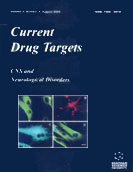Abstract
Following the cloning of the 5-HT7 receptor in 1993, studies to investigate 5-HT7 receptor function in native tissues focused on identifying functional correlates that matched the pharmacological profile determined for the cloned receptor. Studies in peripheral tissues established that the 5-HT7 receptor mediates the relaxation of smooth muscle, including the gastrointestinal tract and cardiovascular systems. Although a number of studies provided preliminary evidence for a role for the 5-HT7 receptor in the circadian pacemaker function of the suprachiasmatic nucleus (SCN), additional studies to investigate 5-HT7 receptor function in other brain regions have, until recently, been hindered by the absence of 5-HT7 receptor-selective ligands. More recently, a number of 5-HT7 receptor-selective antagonists including, SB-269970-A and SB-656104-A have been developed. Studies utilising these compounds suggest that the 5-HT7 receptor modulates neuronal function in a number of brain areas including the hippocampus and thalamus. In turn, these findings suggest that 5-HT7 receptor-selective ligands might prove therapeutically useful for the treatment of psychiatric disorders. In this respect there is increasing evidence to suggest that the 5-HT7 receptor plays a role in the control of both circadian rhythms and sleep and might therefore represent a therapeutic target for the treatment of those disorders in which disturbances in circadian rhythms and sleep architecture are thought to be contributory factors. Furthermore, there is evidence to suggest that the receptor may play a role in other CNS disorders including, anxiety, cognitive disturbances and also migraine probably via both peripheral and central mechanisms. Although further studies are required to confirm the potential role of the receptor in such disorders, findings to date suggest there are exciting opportunities for the development of novel therapeutic agents acting either selectively at the 5-HT7 receptor or whose profile of action includes an interaction with this receptor.
Keywords: 5-ht7 Receptor, brain, distribution, function, unipolar depression, sleep, circadian rhythms, anxiety, schizophrenia, cognition
 52
52

















